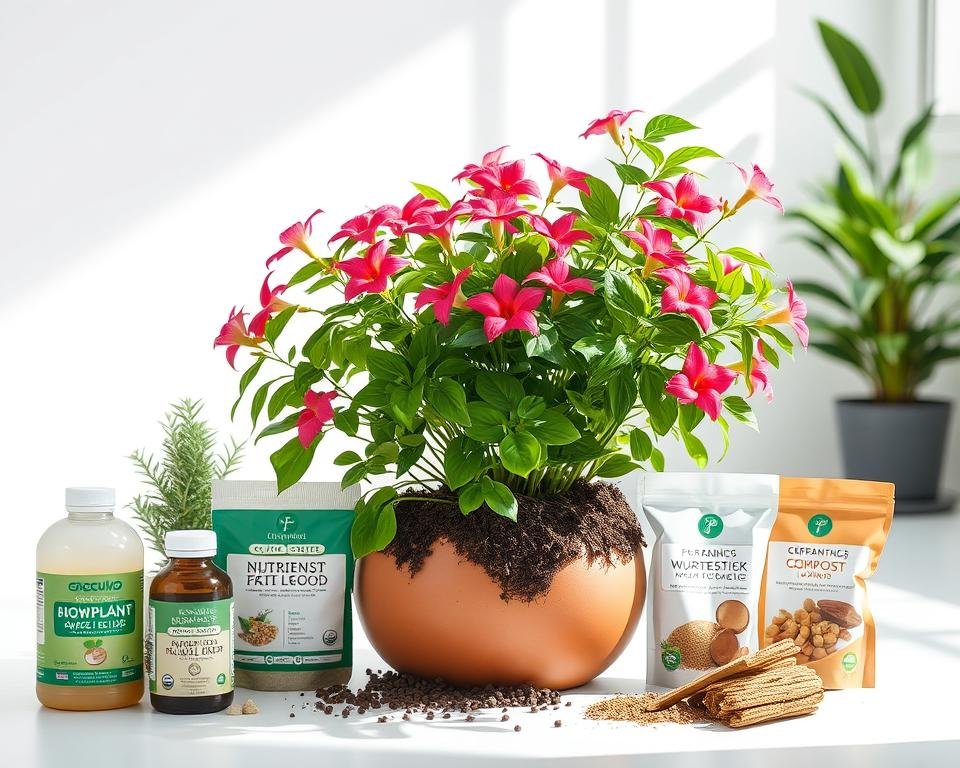Ever thought about growing your own salad greens at home? It might seem like a big challenge, but it’s definitely doable. With the right tips, you can turn your backyard or balcony into a lush salad green garden. This guide will show you how to grow a variety of greens, from lettuce to arugula.
Whether you’re new to gardening or have experience, this article has everything you need. We’ll cover soil preparation, seed sowing, pest management, and harvesting. You’ll learn to grow your own salad greens, enjoying their fresh taste and the satisfaction of homegrown produce. Plus, you’ll save money and help the environment.
The Benefits of Growing Your Own Salad Greens
Growing your own salad greens at home brings numerous advantages. You get unmatched freshness and flavor, along with the benefits of cost-effective and sustainable gardening. These benefits make growing your own greens a compelling choice.
Freshness and Flavor
Homegrown salad greens offer a taste and texture that’s hard to beat. Unlike store-bought greens, which often travel far and sit on shelves, your homegrown greens are picked at the peak of freshness. They retain their vibrant colors, delicate leaves, and robust flavors.
Cost-Effective and Sustainable
Growing your own salad greens is both cost-effective and sustainable. It cuts down on the expenses of buying pre-packaged greens from the store. Plus, it promotes sustainability by reducing the environmental impact of transportation and packaging. You also have full control over the growing process.
Seeking unmatched freshness, cost savings, or a sustainable food approach? The benefits of growing your own salad greens are evident. Embrace the joys of homegrown produce and enjoy the rewards of a thriving, self-sustaining garden.
Tips and Techniques for Growing a Variety of Salad Greens, from Lettuce to Arugula
Growing a salad garden at home is incredibly rewarding. It offers a constant supply of fresh, flavorful greens. Whether you’re into classic lettuce or unique options like arugula, certain tips and techniques are essential.
Choosing the right varieties for your climate and growing conditions is crucial. Lettuce does well in cooler temperatures, perfect for spring and fall. Arugula, however, loves warmer weather, making it ideal for summer salads.
Optimal growing conditions are also key. This means the right sunlight, well-draining soil, and consistent moisture. Proper spacing and succession planting help maintain a steady harvest all season.
- Experiment with different lettuce varieties, such as romaine, butterhead, and leaf lettuce, to add visual interest and flavor to your salads.
- Consider growing arugula, which has a peppery, slightly bitter taste that can complement milder greens.
- Don’t forget about spinach, a nutrient-dense leafy green that can be grown year-round in many climates.
By following these tips and techniques, you can create a thriving salad garden. It will provide you with a bountiful harvest all season long.
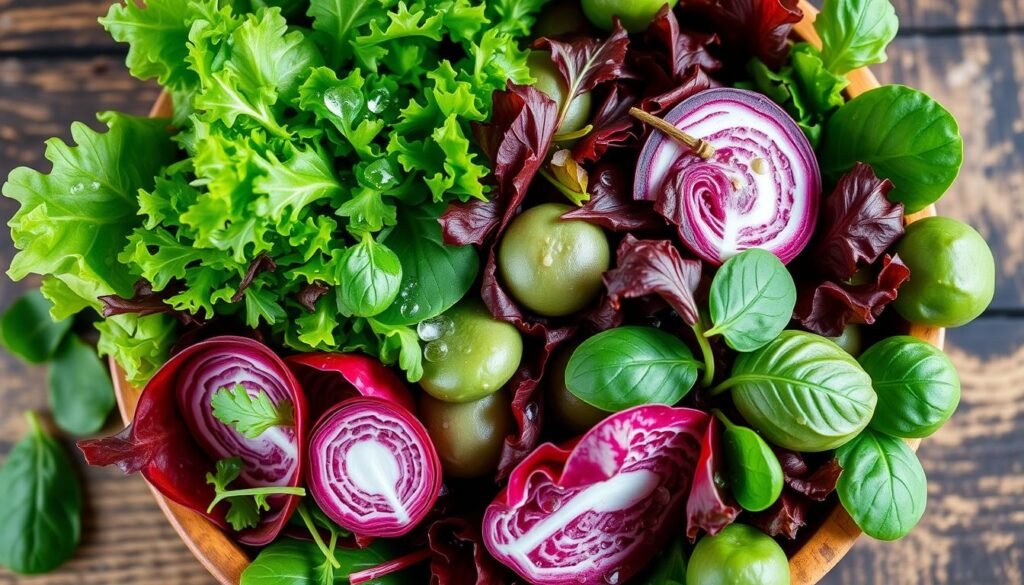
Preparing the Soil for Salad Greens
Ensuring your salad greens thrive begins with proper soil preparation. The right soil amendments and fertilizers are key to providing the necessary nutrients. Let’s delve into the essential steps to prepare your garden soil for a bountiful harvest of salad greens.
Soil Amendments for Salad Greens
To create the perfect environment for your salad greens, consider adding organic matter like compost or well-rotted manure to the soil. These amendments enhance soil structure, increase nutrient availability, and improve water retention. These factors are vital for the healthy growth of your salad greens. Aim for a soil pH between 6.0 and 7.0 for optimal nutrient uptake.
Fertilizers for Salad Greens
Beyond soil amendments, a balanced fertilizer can further nourish your salad greens. Opt for a fertilizer specifically formulated for leafy greens, with a higher nitrogen content to promote lush, green foliage. Organic options like fish emulsion or compost tea offer a steady, gentle release of nutrients throughout the growing season.
| Soil Preparation Component | Benefits for Salad Greens |
|---|---|
| Organic Matter (Compost, Manure) | Improves soil structure, increases nutrient and water availability |
| Balanced Fertilizer (Higher Nitrogen) | Provides essential nutrients for healthy, vigorous growth |
| Optimal Soil pH (6.0-7.0) | Ensures proper nutrient uptake by salad green plants |
By investing time in soil preparation with the right amendments and fertilizers, you lay the groundwork for a thriving salad green garden. This garden will provide you with fresh, flavorful greens right from your backyard.
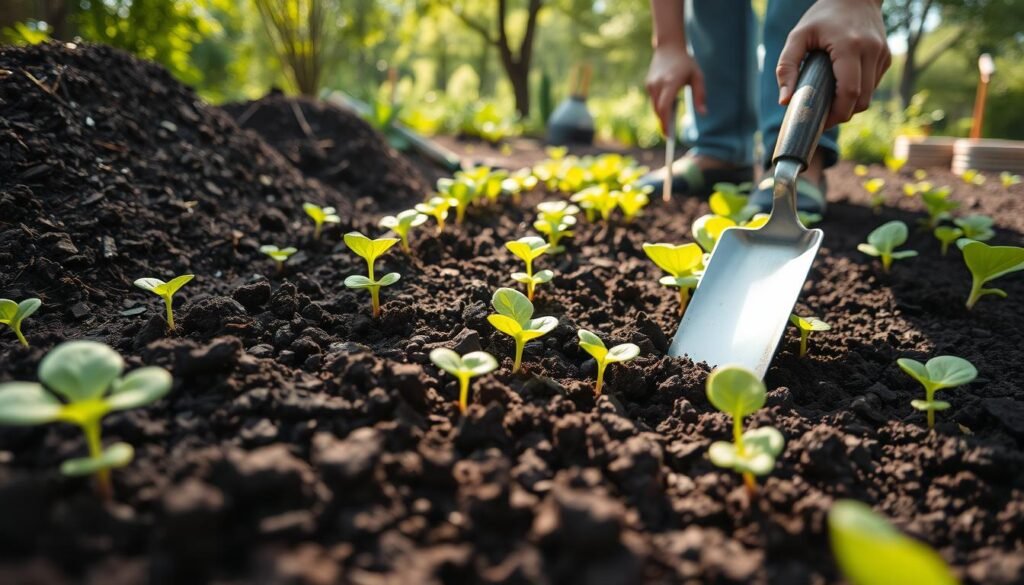
Sowing and Caring for Salad Green Seeds
Growing your own salad greens from seed is incredibly rewarding. Each step, from sowing to nurturing, is crucial for a fresh harvest. Let’s explore the best practices for sowing salad green seeds and caring for salad green seeds. This will ensure a successful growing salad greens from seed journey.
Timing is key when sowing salad green seeds. Most greens prefer cool weather. Sow seeds in early spring or late fall, based on your climate. Prepare the soil by loosening it and adding compost or manure for nutrients.
- Sow seeds 1/4 to 1/2 inch deep, about an inch apart in rows or broadcast evenly.
- Keep the soil moist but not waterlogged, ensuring at least 6 hours of sunlight daily.
- Thin seedlings to 4 inches apart for proper development once they emerge.
For caring for salad green seeds, consistent watering and weed control are essential. Maintain even moisture but avoid overwatering to prevent diseases. Regularly remove weeds to ensure your greens get enough nutrients and water.
| Salad Green Variety | Sowing Depth | Spacing | Days to Germination |
|---|---|---|---|
| Lettuce | 1/4 inch | 4 inches | 7-14 days |
| Arugula | 1/2 inch | 2 inches | 5-10 days |
| Spinach | 1/2 inch | 3 inches | 7-14 days |
By following these guidelines, you’ll enjoy a bountiful harvest of fresh greens. Success in growing salad greens from seed depends on the right conditions throughout the season.
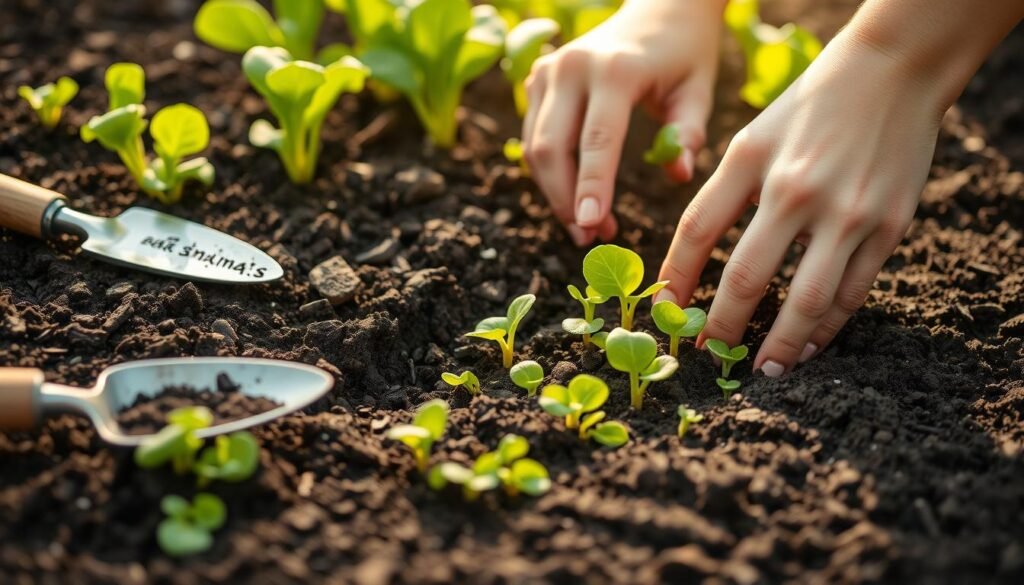
Pest Control and Companion Planting
Keeping your salad green garden healthy requires careful pest management. Organic methods can effectively protect your plants from pests and diseases. Companion planting is a key strategy. It involves placing specific plants near your salad greens to repel harmful insects and attract beneficial ones.
Organic Pest Management Strategies
For salad green pest control, organic methods are superior. They avoid harsh chemicals, focusing on natural techniques to maintain plant health. Effective organic pest management includes:
- Encouraging beneficial insects: Attract ladybugs, lacewings, and other predatory insects that feed on common salad green pests, such as aphids and leaf miners.
- Using organic pesticides: Opt for natural, plant-based pesticides like neem oil or insecticidal soap to target specific pest infestations.
- Practicing proper garden hygiene: Remove diseased or infested plant material, and avoid overcrowding to prevent the spread of pests and diseases.
These organic pest management strategies ensure a healthy, thriving salad green garden. They do so without compromising the safety or quality of your harvest.
The Benefits of Companion Planting
Companion planting is a powerful tool in organic pest control for salad greens. By choosing plants to grow alongside your salad greens, you can use natural interactions to repel pests and enhance garden health.
Key benefits of companion planting for salad greens include:
- Repelling harmful insects: Certain plants, like marigolds and nasturtiums, release chemical compounds that deter pests like aphids and cucumber beetles.
- Attracting beneficial insects: Plants like dill, fennel, and coriander can attract predatory insects that feed on common salad green pests.
- Enhancing soil health: Some companion plants, like legumes, can fix nitrogen in the soil, improving the nutrient content for your salad greens.
Incorporating companion planting into your organic pest management strategy creates a harmonious, self-sustaining ecosystem in your salad green garden.
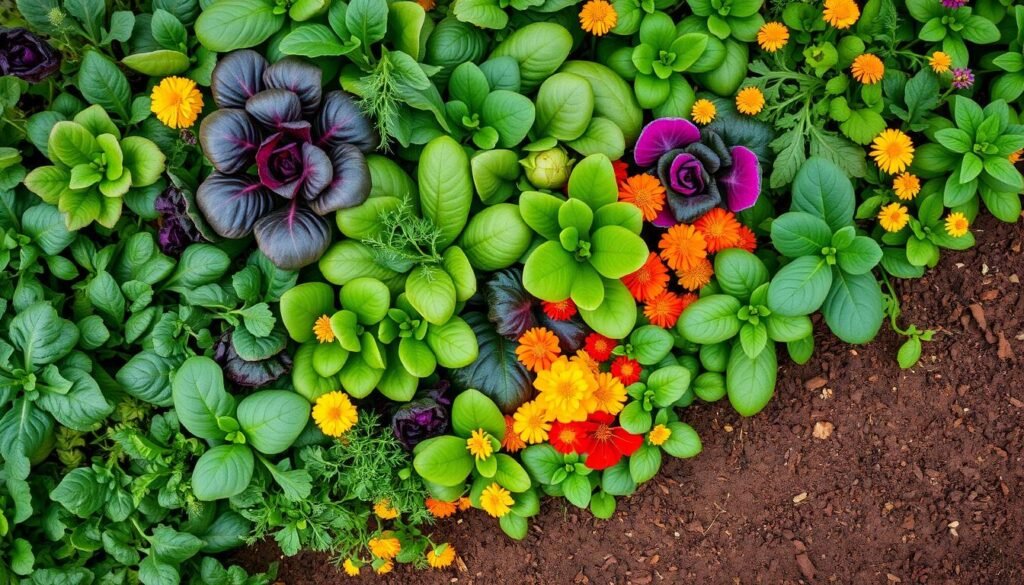
Harvesting and Storing Salad Greens
Maximize your salad green harvest by mastering the art of harvesting and storage. Explore techniques for continuous harvesting to ensure a steady supply of fresh, flavorful greens throughout the growing season. Learn the best ways to store and preserve your salad greens for long-lasting enjoyment.
Techniques for Continuous Harvesting
The key to a bountiful salad green harvest is to employ continuous harvesting techniques. This involves regularly trimming the outer leaves of your plants, allowing the inner leaves to continue growing. By selectively harvesting, you can prolong the lifespan of your salad greens and enjoy a steady stream of fresh produce. Be mindful to leave enough foliage on each plant to ensure its continued growth and vitality.
Another effective strategy is to sow your salad green seeds in succession, planting new batches every two to three weeks. This staggered planting schedule will provide you with a continual harvest, ensuring you have a consistent supply of fresh greens throughout the growing season.
FAQ
What are the benefits of growing your own salad greens at home?
Growing your own salad greens at home offers unmatched freshness and flavor. It also saves money and supports sustainable living through gardening.
What types of salad greens can I grow at home?
You can grow a variety of salad greens at home, like lettuce, arugula, and spinach. Each variety has its own needs and traits.
How do I prepare the soil for growing salad greens?
Soil preparation is crucial for growing healthy salad greens. You need to add the right amendments and fertilizers to enrich the soil. This ensures your plants get the nutrients they need.
What’s the best way to sow and care for salad green seeds?
Learning how to sow and care for salad green seeds is vital. This includes choosing the right varieties, ensuring proper germination, and maintaining your plants throughout the season.
How can I control pests and use companion planting for my salad greens?
Controlling pests and diseases on your salad greens is possible with eco-friendly methods. Organic pest management and companion planting are effective strategies.
When and how should I harvest and store my salad greens?
Maximizing your harvest involves learning about harvesting and storage techniques. Discover methods for continuous harvesting and the best storage methods to enjoy your greens for longer.
